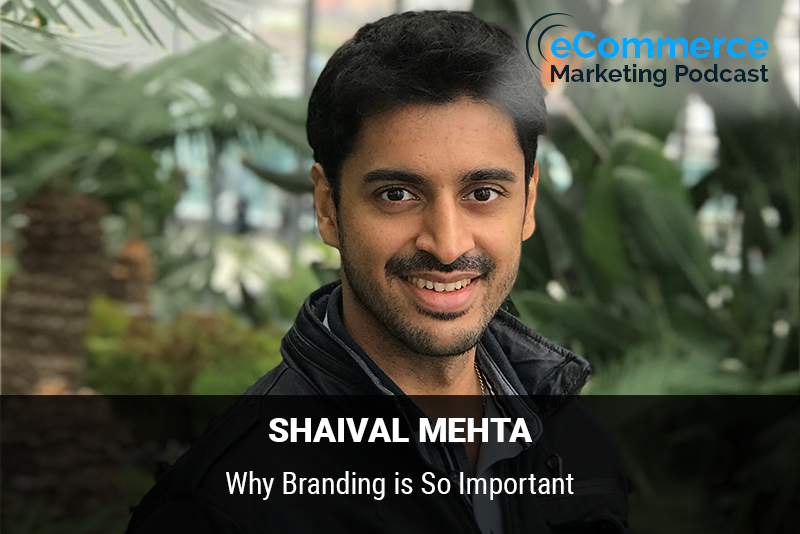
The eCommerce Marketing Podcast walks you through everything that goes into ecommerce marketing — from inbound marketing to paid advertising to conversions. Learn the strategies top marketing experts use to grow their businesses.
Shaival Mehta is the owner of Delesign, a flat rate unlimited graphic design service. We work with agencies, marketing teams and e-commerce businesses to help them create all sorts of content from infographics to animation videos, social media content, logos. Pretty much anything you can describe, we can create. He also has experience running other businesses such as Molecular Apps on Shopify which effectively is used to build apps for Shopify merchants. His overall strategy is to effectively help e-commerce businesses focus on their core competency and leave the rest to us.
In this episode, you will learn
- Why branding more important these days for growing an ecommerce business
- Some methods of using distinctive graphic design work for doing branding for your ecommerce business
- Specific rules of thumb that an ecommerce business should follow to have success in branding across social media platforms
- Examples of some ecommerce brands that have utilized effective branding to achieve growth
For show transcript and past guests, please visit https://www.ecommercemarketingpodcast.com
Or on YouTube at:
https://www.youtube.com/channel/UC3PgT0NOGzpdPGQtBK0XLIQ
Follow Arlen:
Twitter: https://twitter.com/askarlen
Facebook: https://www.facebook.com/arlen.robinson.7
Instagram: https://www.instagram.com/arlenyohance/
LinkedIn: https://www.linkedin.com/in/arlenrobinson/
Past guests on the ecommerce marketing podcast include Neil Patel, Nemo Chu, Luke Lintz, Luke Carthy, Amber Armstrong, Kris Ruby and many more.
Thanks for listening. Be sure to subscribe and leave a review.

In this episode of the eCommerce Marketing Podcast, host Arlen Robinson sits down with Shaival Mehta, owner of Delesign, a flat-rate unlimited graphic design service catering to agencies, marketing teams, and e-commerce businesses. Shaival discusses the importance of branding in the competitive e-commerce landscape and shares practical tips on how to create and sustain a distinctive brand identity. Delesign helps e-commerce businesses focus on their core competencies by providing affordable, high-quality graphic design services.
Key Takeaways:
- Introduction to Shaival Mehta and Delesign (00:00:57)
- Shaival’s background and how he transitioned from engineering to running a graphic design service.
- The Importance of Branding in E-Commerce (00:05:20)
- Why branding is crucial for setting businesses apart in a crowded market.
- Graphic Design and Branding Strategies (00:08:40)
- Methods for using distinctive graphic design to enhance branding.
- Creating Effective Graphics for Social Media Platforms (00:12:54)
- Tips for designing graphics tailored to various social media channels.
- Balancing Attention-Grabbing Graphics and Brand Integrity (00:16:04)
- Ensuring that striking ads remain true to the brand and do not offend the audience.
- Examples of Successful E-Commerce Branding (00:18:23)
- Case studies of brands like Amazon and Hush Puppies that have excelled in branding.
Bullet Points of Key Takeaways with Timestamps:
- [00:00:57] Introduction to Shaival Mehta and Delesign.
- [00:05:20] Importance of branding in e-commerce.
- [00:08:40] Using distinctive graphic design for branding.
- [00:12:54] Creating effective graphics for various social media platforms.
- [00:16:04] Balancing attention-grabbing graphics with brand integrity.
- [00:18:23] Examples of successful e-commerce branding.
Guest Information:
Shaival Mehta
- Owner of Delesign
- Website: Delesign











